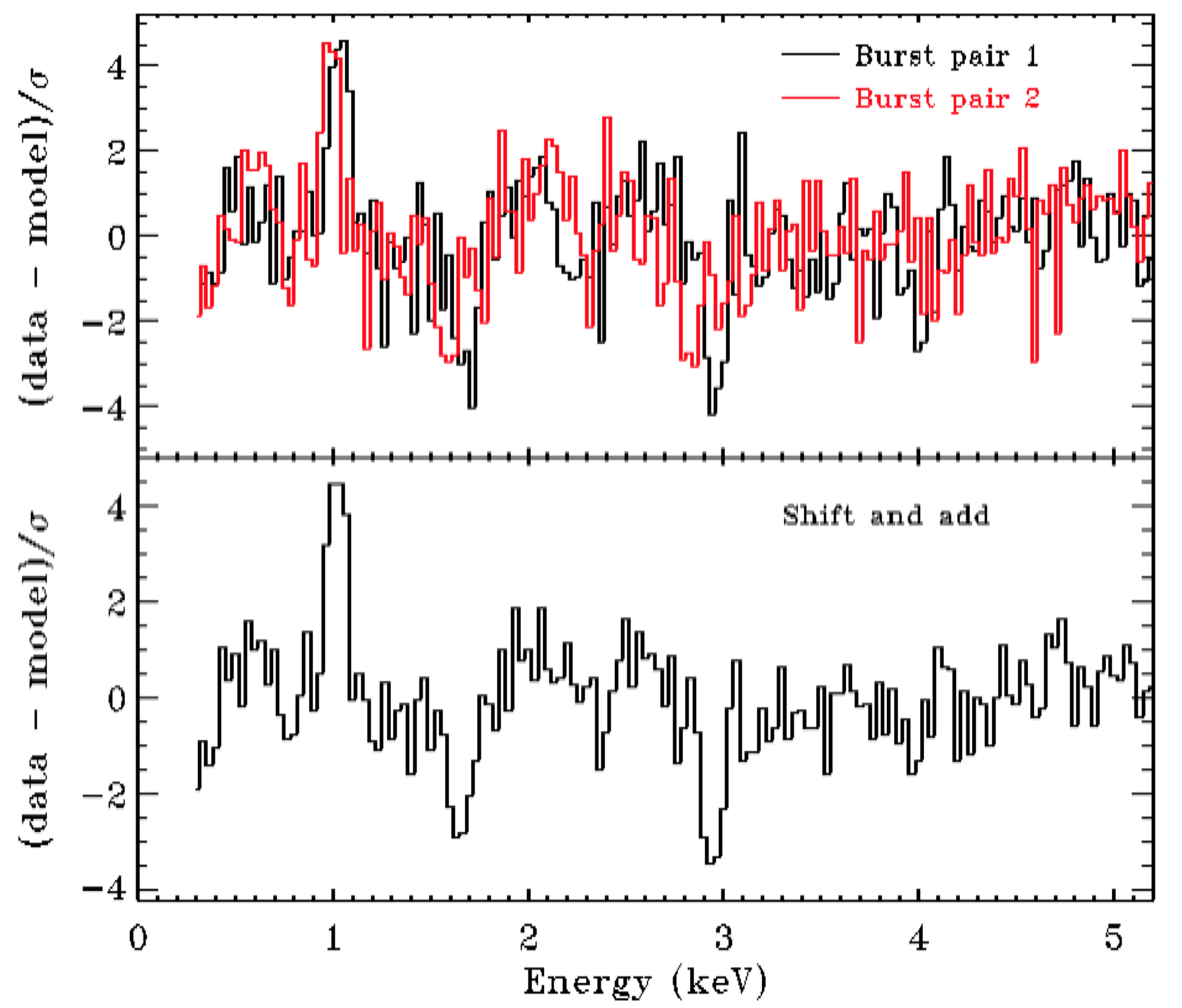NICER / ISS Science Nugget for March 14, 2019X-ray burst shows evidence of gravitational redshifting from neutron starSome neutron stars in binary systems are accumulating matter, a process known as accretion, from their orbital companions. This accreted material is rich in light elements such as hydrogen and helium. As the material piles onto the extremely dense and compact neutron star, it is compressed and can eventually explode in a thermonuclear conflagration called an X-ray burst. These bursts dramatically heat the neutron star surface and shine brightly in X-rays for 10-100 seconds. They provide a unique opportunity to closely study the neutron star and its environs, and are key targets for NICER. Some bursts are so powerful that the surface layers are blasted off into space by the intense radiation. This can expose the elements produced by the furious fusion of the light-element fuel. NICER observed such X-ray bursts from the neutron star in the system 4U 1820-30. This is a very compact binary system with an orbital period of just 11.4 minutes. The stars are only about 130,000 km apart, less than half the Earth-Moon distance. NICER has observed powerful X-ray bursts from this system and discovered spectral lines during the time intervals when the atmosphere was lifted off of the surface. These spectral signatures are likely formed by the materials forged in the powerful bursts and blasted into a puffed-up atmosphere, and may be signatures of heavy elements such as iron and sulphur. The accompanying figure shows spectra from these bursts with an emission line at 1 keV and absorption lines at 1.7 and 3 keV. The gravitational field of the neutron star is so strong that in order for light to escape the star energy must be surrendered; this "red-shift" stretches the light to longer wavelengths, and holds important clues to the mass and size of the neutron star. The NICER spectra reveal such a shift for the first time (top panel of the figure). These new findings are providing scientists with new ways to study these bursting neutron stars and the elements they produce by nuclear burning. NICER
|



